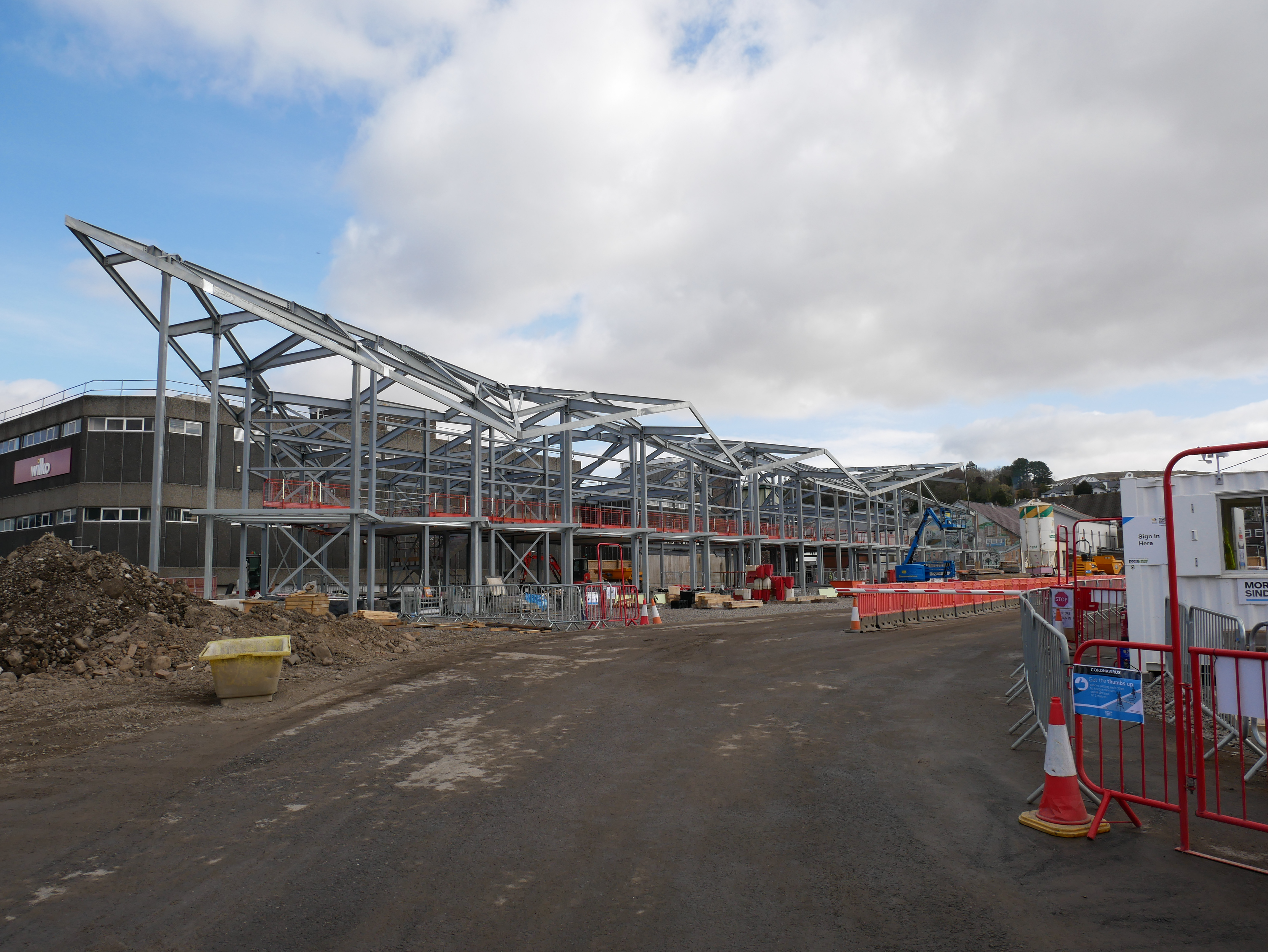







Merthyr Tydfil Bus Station
Shufflebottom Ltd - Morgan Sindall
The £12 million Merthyr Tydfil Bus Station project, completed in June 2021 has set the benchmark for green transport infrastructure in Wales. It is the first in Wales that allows for the charging of electric vehicles. Funding came from Welsh Government, as part of its drive for all public transport to be electric by 2028. It has no gas or fossil fuel supplies, with its heating and hot water provided through green renewable sources and also has a rainwater harvesting system that serves the toilet facilities.
KEY STATS
First electrified bus station in Wales
50 tonnes of carbon reduced in construction
Delivered on time, in budget
£9.5 million in social value
94% local spend
18 new jobs and 807 new entrant employment weeks
Six apprentices
526 pupils inspired through STEM events
200 volunteer hours donated
134.5 tonnes hot rolled steel
0.529 tonnes cold rolled steel
43.5 tonnes galvanised steel
91 tonnes painted steel
Huge social impact on the locality
Procured through the SEWSCAP framework, the two-storey steel framed main building measures 1,130 square meters. It features a zinc roof that has been designed to resemble the nearby iconic Cyfarthfa ironworks – which closed in 1928 – in celebration of the town’s heritage.
On the ground floor is 11 internal stands, including one capable to be used for coaches which provide easy access to vehicles for the public. There is also a modern public concourse with natural lighting that’s to the buildings large glass front.
The space is entirely accessible for disabled users with all flooring either flat or ramped. There is also a kiosk, café and public toilets. The second-floor features mess facilities ad open space for the main bus operator.
Externally there are three further stands and four electrical charging points for taxis. Planted trees and shrubs create a green space for service users, while granite benches create a large breakout area.
Approach
Sustainable first principles were a key part of the project – ensuring the design and construction phase would match the environmentally friendly operation of the station.
By applying Circular Economy principles, the team were able to use materials such as recycled natural stone and timber soffits within the design. The building was also constructed in layers allowing for easy maintenance in the future and easier deconstruction at the end of its life.
Through embracing these principles, the team achieved a 100% waste diversion rate, reduced construction carbon by 50 tonnes and achieved a 50% lower carbon usage rate than any other Morgan Sindall Construction site nationally.
This was achieved through elimination of generators and switching to green energy suppliers, hybrid excavators during construction works, electric and hybrid vehicles for staff, full energy audits and cascade of these key requirements throughout the supply chain.
BIM also played a key part in the project’s success. Used through design and construction it was used to map underground services, develop the roof design, co-ordinate the complex services arrangement, manage multiple material interfaces and support the circular economy strategy.
Working via an NEC3 contract, the team worked collaboratively to overcome the complex logistical challenges. This helped keep the busy city centre flowing, despite the site being dissected by three major highways and five pedestrian routes. The team even enabled public realm and infrastructure works, separate to our contract, but those which dissected our works, be undertaken. This involved additional co-ordination, but enabled vital access point upgrades to be complete at the same time as the project, easing the burden on town centre movement.
SOCIAL IMPACT
The Merthyr Tydfil Bus Station project generated over £9.5 million in social value locally, thanks to the implementation of a social value strategy in partnership with the council. This included elements such as a local and responsible procurement framework that ensured 94% of spend remained local. 18 local people, new to the construction industry were employed on the project and 807 weeks of new entrant employment were achieved, exceeding the project target by 77%. In addition, six apprentices were employed on the scheme, forging new careers in our industry.
Photographs © Steve Sharpe, Shufflebottom
